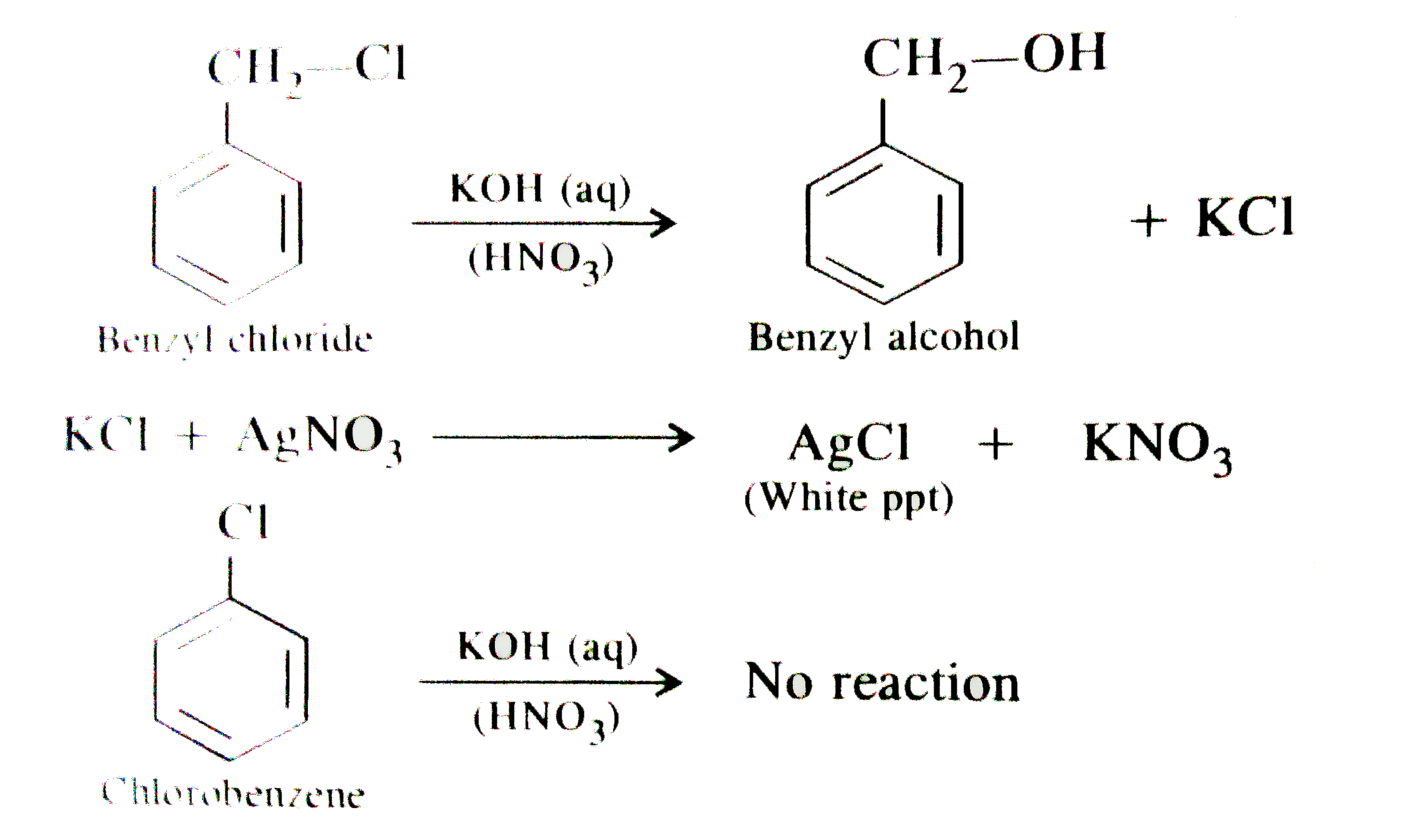when benzyl chloride is boiled with aqueous solution and the solution is acidified by a few drops of dilute followed by solution, a white precipitate is formed. However, no such precipitate is noticed when the reaction is carried with chlorobenzene. explain.
In case of , the benzyl carbocation formed by releasing ion is resonance stabilised. Therefore, the bond can cleave to form . However, the phenyl carbocation expected to be formed in case of chlorobenzene does not show any resonance. therefore, bond does not cleave in case of chlorobenzene and no white precipitate is formed in this case.

Similar Questions
Knowledge Check
When aqueous solution of potassium fluoride is added to the blue coloured aqueous CuSO4 solution , a green precipitate is formed . This observation can be explained as follows .
AOn adding KF,H2O being weak field ligand is replaced by F− ions forming [CuF4]2− which is green in colour .BPotassium is coordinated to [Cu(H2O)4]2+ ion present in CuSO4 and gives green colour .COn adding KF,Cu2+ are replaced by K+ forming a green complex .DBlue colour of CuSO4 and yellow colour of KF form green colour on mixing .
CCl4 gives a white precipitate when treated with AgNO3.
View SolutionWhen a small amount of HCl is added to an aqueous solution of BiCl3 , a white precipitate is formed. This is due to formation of
View SolutionThe metallic salt (XY) is soluble in water.
(a) When the aqueous soluble of (XY) is treated with NaOH solution, a white precipitate (A) is formed. In excess of NaOH solution, a white precipitate (A) is formed. In excess of NaOH solution, white precipitate (A) dissolves to form a compound (B). When this solution is boiled with soild NH4Cl, a precipitate of compound (C) is formed.
(b) An aqueous solution on treatment with BaCl2 solution gives a white precipitate (D) white is insoluble in conc HCl.
( c) The metallic salt (XY) forms a double salt (E) with potassium sulphate.
Identify (XY),(A),(B),(C),(D) and (E).
View SolutionWhen aqueous KCN is added to a solution of copper sulphate, a white precipitate, soluble in a excess of KCN is formed. No precipitate is formed when H2S is passed into it Explain.
View Solution(i) A white solid mixture of two salts containing a common cations in insoluble in water. It dissolves in dilute HCl producing some gases (with effervescence) that turn an acidified dichromate solution gren. After the gases are passed through the acidified dichromate solution, the emerging gas turns baryta water milky.
(ii) On treatment with dilute HNO3, the white solid gives a solution which does not directly give a precipitate with a BaCl2 solution but gives a white precipitate when warmed with H2O2 and then treated with a BaCl2 solution.
(iii) The solution of the mixture in dilute HCl, when treated with NH4Cl,NH4OHand an Na2HPO4 solution, gives a white precipitate.
Q. The white precipitate obtained in (ii) indicates the presence of a:
View SolutionA white sodium salt dissolves in water to give a solution which is neutral to litmus.When silver nitrate solution is added to the solution, a white precipitate is obtained which does not dissolve in dilute HNO3.The anion is
View SolutionSolutions of silver nitrate and sodium chloride react to form a white precipitate of
View Solution